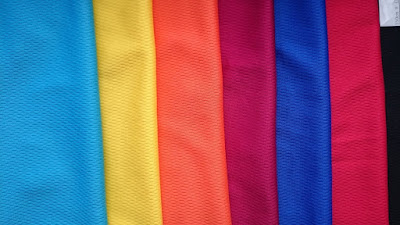What is Fabric? Types of fabric?
What is Fabric? Types of fabric?
Answer:
Fabric:
Fabric is cloth or different material created by weaving along cotton, nylon, wool, silk, or different threads. Fabrics are used for creating things like garments, curtains, and sheets. The fabric of a society or system is its basic structure, with all the customs and beliefs that build it work with success. Fabric is flexible planate substance created from resolution, fibers, yarns, of fabrics, in any combination. Textile fabrics may be created directly from webs of fibers by bonding, fusing, or interlocking to create non-woven materials and felts, however their physical properties tend to restrict their potential end-usage. The mechanical manipulation of yarn into fabrics is that the most versatile technique of producing textile fabrics for a good range of end-uses.Types of Fabric:
1. Woven fabric
2. Knit fabric
3. Non-woven fabric
4. Braided fabric
Woven fabric:
Woven fabric only stretches diagonally on the bias directions (between the warp and weft directions), unless the threads used are elastic. Woven fabric cloth typically frays at the perimeters, unless techniques are used to counter it, like the utilization of pinking shears or hemming.
The fabrics that are created by interlacing 2 sets of yarn i.e. War yarn and weft yarn by in is termed as woven fabric. It is the intersection or interlacement of 2 sets of straight threads, warp (ends), and weft (picks or filling), that cross and interweaves at the correct angles to every different. Weaving is far and away the oldest and most typical technique of manufacturing continuous lengths of straight-edged fabric.
The fabrics that are created by interlacing 2 sets of yarn i.e. War yarn and weft yarn by in is termed as woven fabric. It is the intersection or interlacement of 2 sets of straight threads, warp (ends), and weft (picks or filling), that cross and interweaves at the correct angles to every different. Weaving is far and away the oldest and most typical technique of manufacturing continuous lengths of straight-edged fabric.
Knitted Fabrics:
Knitting is that the construction of an elastic, porous fabric, created by interlocking yarns by means that of needles. Knitted fabrics are often created way more quickly and simply than woven fabrics at relatively less price. Knitted fabrics are typically lightweight in weight, comfortable in wear even throughout travel, however yet need very little care to stay their neat look. The tendency of knits to resist wrinkling is another issue to spice up up their quality. Knitted fabrics are used for planning active clothing like sportswear. Their elastic nature permits for abundant physical activity. Knitted fabrics are created by 2 general ways. Warp knitting and weft knitting. They're created as flat or hollow fabrics looking on the top use. Hollow fabrics might not have any seams at the sides wherever as flat fabrics are treated rather like woven fabrics.
Non-woven Fabric:
This kind of fabric is created by connecting yarn with mucilaginous or bonded materials. Nonwovens are versatile, porous product consisting of 1 or a lot of fibre layers. The separate fibres could either be preferentially orientated in one direction or could also be deposited in a very random manner. They're guaranteed by chemical, thermal or mechanical processes into textile product. Nonwovens are in the main planar structures.
Braided Fabric:
It includes variety of techniques, like braiding and knotting, wherever threads are caused to intertwine with each other at right angles or another angles. These techniques tend to supply special constructions whose uses are restricted to very specific functions. There's another technique of manipulating directly fibre into textile fabrics is thus known as nonwoven method. This comparatively young branch of the textile industry has dilated hugely after the second world-war due to the high production rates and therefore the ensuing price savings.




No comments